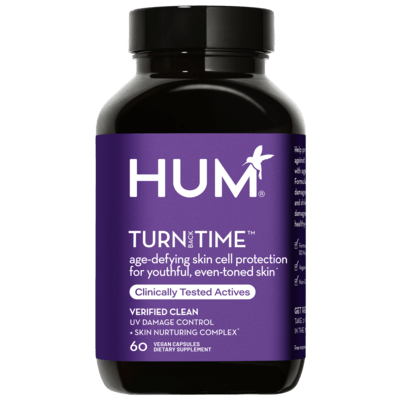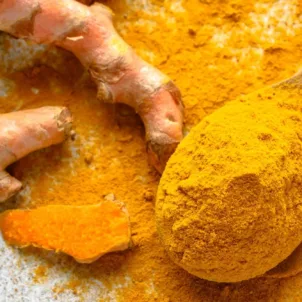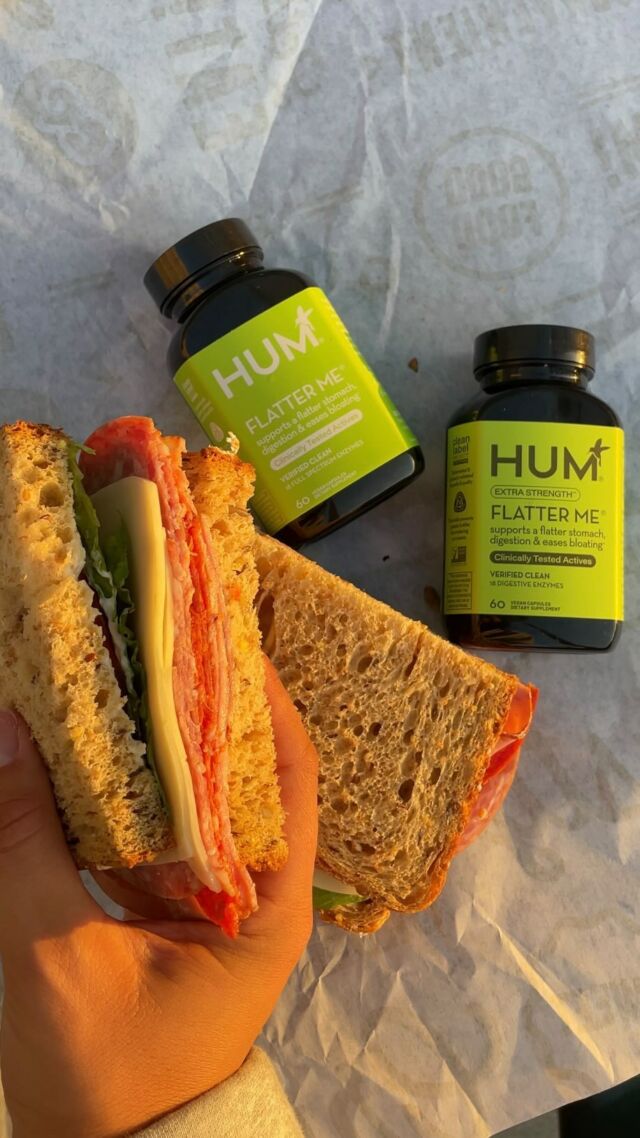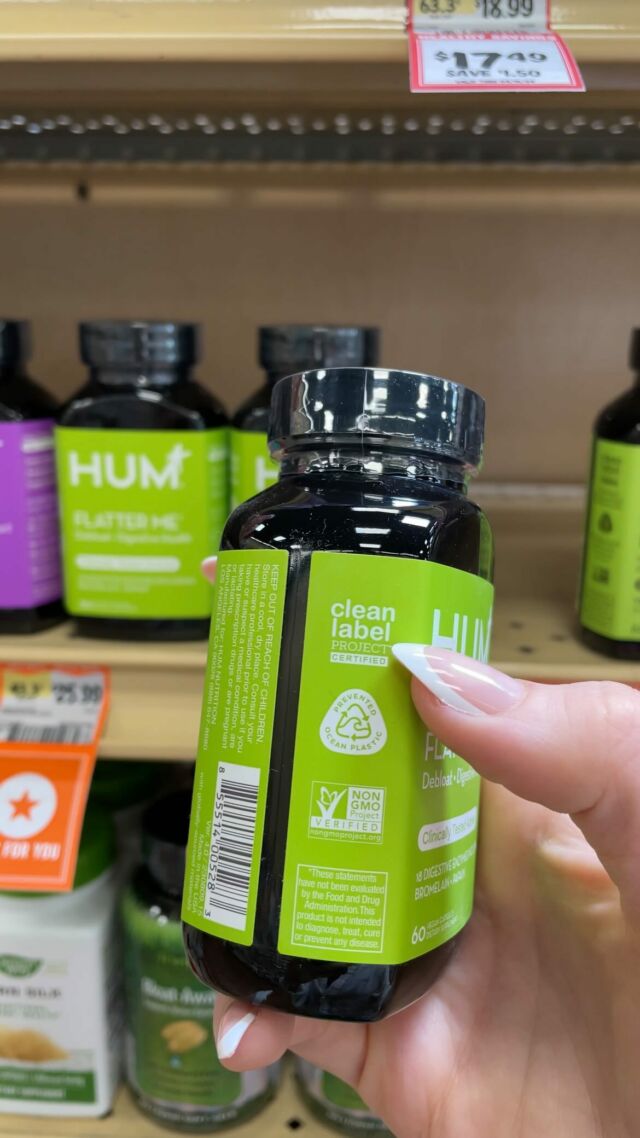Turmeric has countless health benefits (think: anti-inflammatory properties and high antioxidant levels), which makes it the perfect ingredient to add to your weekly lineup. Wondering how to incorporate this star spice? Here are seven turmeric recipes to try right now.
In the colder weather, we naturally turn to spicy foods to give us cozy vibes. But these foods do more than warm us up from the inside: They can provide you with some serious health benefits (such as boosting your metabolism or providing your system with anti-inflammatory properties). When you think of spicy foods, you might think of ingredients such as cinnamon or pepper —or maybe even ginger. But dietitians recommend adding turmeric to your spice repertoire, too. It’s more than just the bright yellow component found in curry powder. It’s surprisingly versatile, with health benefits to boot. Ready to try the spice? Here are seven turmeric recipes you need to try ASAP—plus everything you need to know about the ingredient.
What is Turmeric?
Turmeric is a root that looks similar to ginger but with an orange color and an earthy taste that’s slightly bitter and peppery. It’s native to southern India and Indonesia and widely cultivated on the mainland and on the islands of the Indian Ocean.
Benefits of Turmeric
Turmeric has long been used in ancient India for its healing qualities, but it has become more widely known and appreciated for its antioxidant and low inflammatory profile, says Gaby Vaca-Flores, RDN, HUM’s educational specialist.
You’ve likely heard that turmeric has a myriad of health benefits. According to Vaca-Flores, the spice’s antioxidant and anti-inflammatory properties are the two main mechanisms that allow it to deliver a wide array of impressive benefits, thanks to curcumin, the main polyphenol in turmeric.
Studies have shown that curcumin can help promote healthy cholesterol levels and reduce markers for aging and stress on various parts of the body. Another trial linked it to improving cognition, mood, and protecting the skin from aging.
Ground Turmeric vs. Fresh Turmeric
You might be wondering if there are pros and cons to ground turmeric vs fresh. You can use the two fairly interchangeably, but fresh turmeric root is worth trying (if you have access to it) because the flavor is more complex compared to the ground version. Fresh turmeric is great for texture (like in the turmeric chicken and turmeric cauliflower recipes below) but ground turmeric incorporates more easily into liquids, like if you’re making turmeric tea or turmeric milk.
Fresh turmeric can be found in the produce department, often around other international items. Ground turmeric is available in the spice aisle and has a slightly more muted taste because it’s finely ground.
Tips for Cooking with Turmeric
Ready to get going on those turmeric recipes? Read this first. Whether you’re cooking with turmeric powder or cooking with turmeric root, it’s important to keep these things in mind
- Turmeric can potentially stain surfaces it comes into contact with, so wipe up your cutting board or countertop quickly—and wash your hands, too. (It’s why it’s often been used as a natural dye.)
- Sprinkling just a little bit on everyday recipes can make a big difference. In addition to these turmeric recipes, you can use it in scrambled eggs (or a tofu scramble), with pork tenderloin, on roasted vegetables of all kinds, or in chicken soup.
- When cooking with fresh or ground turmeric, Vaca-Flores says it’s best to pair it with black pepper or a healthy fat. A crossover study found that both ground and fresh turmeric are equally bioavailable in the presence of an enhancing agent like black pepper or a healthy fat.
- You can also get your turmeric fix through supplements. If you do, you don’t need to worry about the presence of black pepper as long as the supplement contains curcumin in its extract form.
How Much Turmeric Is Too Much?
There aren’t any official upper limits established for turmeric, but according to the World Health Organization Expert Committee on Food Additives (JECFA), the acceptable dietary intake for curcumin is 1.4 mg per pound (3 mg/kg) of body weight daily. A teaspoon of ground turmeric contains 200 mg of curcumin.
But don’t stress about the math. Vaca-Flores’ advice is to keep it simple: “Supplement curcumin on days you aren’t adding turmeric to your diet.” You’re not likely to overdo it on curcumin consumption, but she generally feels this is the easiest way to get turmeric in your diet in a variety of ways.
If you’re using a supplement, she recommends looking for one with at least 100 milligrams of turmeric extract. To determine whether you’re receiving a high-quality formula, she suggests looking for products with third-party certification such as Safe Quality Food (SQF). HUM’s Turn Back Time holds this certification and is made with turmeric extract that is 95 percent curcumin. “It’s like you’re skipping the middleman and getting curcumin in its most absorbable form,” she says.
Ready to start incorporating more warm, peppery turmeric recipes into your diet? Try our favorites, below
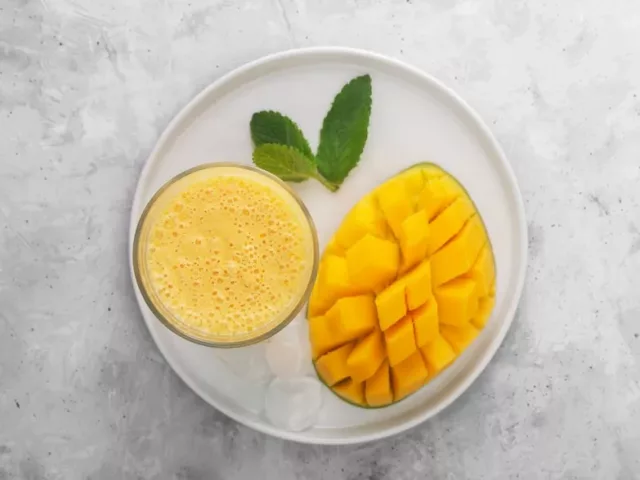
Mango Turmeric Smoothie
Turmeric is a great counterpoint to ingredients such as coconut milk, mango, and banana because of its peppery, earthy taste. If you don’t have coconut milk, swap oat milk instead (but keep in mind it won’t have that signature tropical taste). Feel free to add a plant-based protein powder like HUM’s Core Strength to make it more filling and to support muscle recovery after a workout.
2 minutes
0 minutes
1
INGREDIENTS
- 1 cup canned coconut milk
- ½ cup frozen mango (or fresh)
- 1 banana
- 1 teaspoon honey
- ½ teaspoon ground ginger
- 1 1-inch piece fresh turmeric, peeled (about 1 tablespoon, or 1 teaspoon ground)
SUPPLIES
- High-speed blender
INSTRUCTIONS
- Combine all the ingredients in a high-speed blender and blend until smooth. (Use a handful of ice if you aren’t using frozen mango.)
- Pour into a chilled glass (optional) and enjoy immediately.
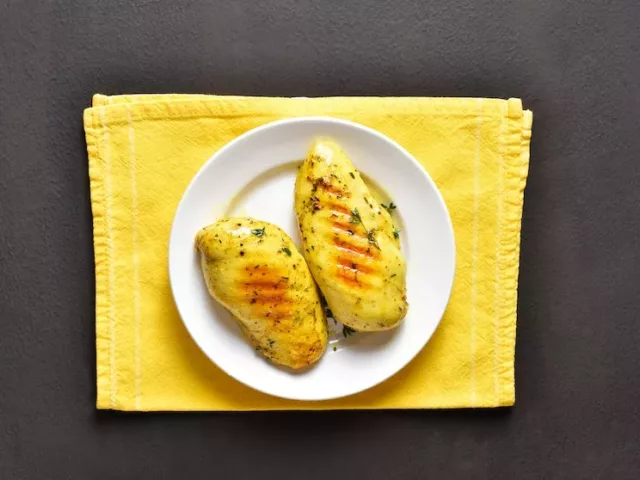
One-Pot Garlic-Turmeric Chicken
The trick to this dish’s great flavor is making a paste of turmeric, garlic, and ginger, combined with coconut oil or olive oil, and rubbing that all over the chicken thighs as they simmer. Serve with your favorite gluten-free grain (such as quinoa) or over brown rice and alongside a green salad.
If need be, you can make this more as a spice rub than a paste. Just use two teaspoons of granulated garlic, one teaspoon ground ginger, and one teaspoon ground turmeric, and rub it over the chicken before cooking.
5 minutes
5 minutes
4
INGREDIENTS
- 2-3 cloves garlic, peeled and roughly chopped
- 1 1-inch knob ginger, peeled and roughly chopped
- 2 tablespoons olive oil or coconut oil, as needed
- Salt, to taste
- Freshly ground black pepper, to taste
- 1 pound boneless, skinless chicken thighs
- 1 to 2 cups low sodium organic chicken stock
- Freshly chopped parsley or cilantro, for garnish, optional
INSTRUCTIONS
- In a food processor or blender, combine the garlic, ginger, and turmeric along with 1 tablespoon of oil and salt and pepper, to taste, until mostly smooth. (A little bit of texture is OK). You can do this a day ahead of time if you like and store it in a jar at room temperature.
- Rub the paste all over the chicken until it’s evenly distributed. Set aside.
- Heat the remaining olive oil in a skillet over medium heat and add the chicken.
- Cook the chicken for a minute or two on each side, and add the stock or water. Cover, reduce heat. Simmer for about 10 minutes, rotating with tongs as needed, until completely cooked through and the internal temperature reaches 175 in an instant-read thermometer.
- Serve over quinoa, millet, or rice and garnished with chopped parsley or cilantro, if desired. Or serve with roasted cauliflower.

Roasted Turmeric Cauliflower
Cauliflower is a blank slate when it comes to cooking, easily taking on the flavors of whatever it’s paired with. When roasted with turmeric, garlic, sea salt, cumin, and coriander, it becomes warm, nutty, spicy, and a little bit sweet. Is your mouth watering yet?
5 minutes
5 minutes
4
INGREDIENTS
- 1 head cauliflower
- 2 teaspoons ground turmeric
- 1 teaspoon granulated garlic
- 1 teaspoon pink Himalayan sea salt
- ½ teaspoon ground cumin
- ½ teaspoon ground coriander
- ½ teaspoon freshly ground black pepper
- 2 tablespoons olive oil or ghee
INSTRUCTIONS
- Preheat the oven to 400 F.
- Core and chop the cauliflower into florets that are roughly bite-sized.
- Combine the turmeric through olive oil (or ghee) in a medium bowl.
- Toss the cauliflower in the bowl with the oil and spices until evenly coated. Transfer to a rimmed baking sheet and roast for 20 to 25 minutes until golden brown.

Lemon Turmeric Coconut Bites
10 minutes
10 minutes
4
INGREDIENTS
- 1 cup almond flour
- ½ cup coconut flour
- ½ cup finely shredded dried unsweetened coconut, plus more as needed for rolling
- ½ cup almonds
- Zest and juice of 2 lemons, totaling 1/4 to 1/3 cup juice
- ½ teaspoon ground turmeric
- ½ teaspoon ground ginger (optional)
- ½ teaspoon pink Himalayan sea salt
- 2 tablespoons extra virgin coconut oil, melted
- 2 tablespoons honey
SUPPLIES
- Food processor
- Parchment paper
INSTRUCTIONS
- Combine almond flour through lemon zest in the bowl of a food processor fitted with the blade. Pulse several times until combined, leaving the almonds a little chunky.
- Whisk together the lemon zest and juice, along with the turmeric, ginger, and salt in a small bowl. Add the melted coconut oil and whisk until smooth, and whisk in the honey.
- With the food processor running, pour the liquids through the chute until the mixture begins to pull away from the sides of the bowl. If it feels dry, add a tablespoon or two of cold water, if needed, until it comes together.
- Scoop out balls about the size of a walnut and roll between your palms. Roll in more coconut if you like, and transfer to a baking sheet lined with parchment or Silpat. Cover loosely and refrigerate for 2 hours or until firm, before transferring to an airtight container.
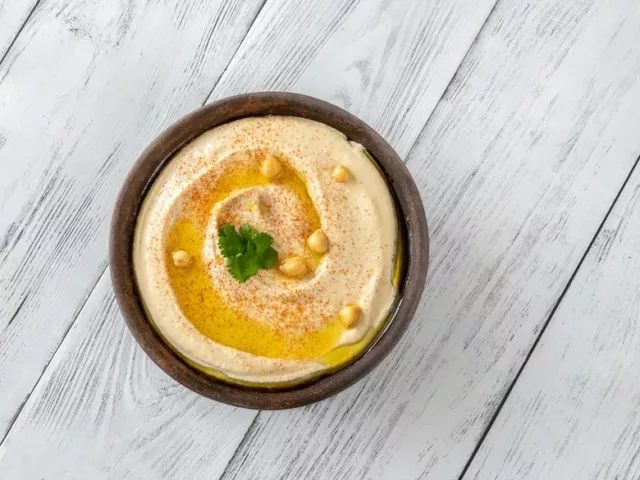
Golden Beet Turmeric Hummus
Upon first glance, you might mistake this hummus for the traditional sort. But with golden beets and turmeric, this popular dip takes on a yellowy hue. Turmeric pairs well with hummus, along with some cumin and paprika for an extra kick of flavor. Golden beets look orange on the outside but have yellow-orange flesh and are sweeter than their red counterpart. Mix them all together, and you’ve got a healthy dip that’s loaded with extra fiber and vitamins.
10 minutes
10 minutes
4
INGREDIENTS
- 1 cup golden beets, roasted, skins removed and quartered
- 1 (15-ounce) can chickpeas, drained and rinsed
- 2 cloves garlic
- 2 tablespoons tahini
- 1/2 teaspoon ground cumin
- Zest and juice of one lemon
- Pink sea salt, to taste
- Freshly ground black pepper, to taste
- 1/3 cup olive oil
SUPPLIES
- Food processor
INSTRUCTIONS
- Place the beets through pepper in the bowl of a food processor fitted with the blade and pulse several times to combine.
- Drizzle in olive oil with the processor running and process until the consistency is smooth, stopping to scrape down the sides of the bowl as needed.
- Taste; it may need more salt and pepper or lemon juice, or both.
Looking for more turmeric recipes? Check out our favorites, below!
- TURMERIC TEA
- TURMERIC MILK
